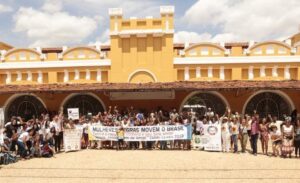Charting a New Course for U.S.-Cuban Relations
By William M. LeoGrande and Jenny Morín Nenoff
It was a real sensation: On 17 December 2014, when the heads of state of Cuba and the United States announced their intention to normalize relations between the two states, which had been frozen for over a half century, the global public reacted with surprise. What led to this change? Will the words be followed by deeds? Will the embargo now be lifted?
The welcome reaction of large majorities in both countries to the resumption of diplomatic relations shows how overdue this rapprochement had been. Its concrete results are already evident. In the secret negotiations – mediated by the Canadian government and especially by Pope Francis – both sides agreed to an exchange of prisoners, the relaxation of restrictions on tourism, and the facilitation of money transfers and telecommunication.
By the end of January, the redefinition of relations between the USA and Cuba became the dominant issue at the Third Annual Summit of CELAC (Community of Latin American and Caribbean States) in Costa Rica. In the closing documents, the heads of state present greeted the change but also stressed the immediate need to lift the ongoing U.S. economic and financial blockade of Cuba.
The rapprochement has fueled hopes in Cuba that the two generations-long blockade, and the massive economic restrictions which it has caused, could now come to an end. Ever since the collapse of the Soviet Union, and thus also of Cuban foreign trade, the Havana government has been compelled to undertake many experiments in order to uphold its own socialist model. On the one hand, this has worked: Cuba has hold its own against its overpowering capitalist neighbor. On the other hand, the country has had to pay a high price and has become entangled in deep contradictions. Can the vertical planned economy work with elements of market economy? What remains of ‘Cuban socialism’ in the 21st century? These are the burning questions which Cuba’s leadership has to face now more than ever.
For one thing is clear: The U.S. government has indeed changed its strategy―but not its goal, which is system change in Cuba. In the first essay, William M. LeoGrande, Professor of Government at the American University in Washington, DC, analyses the change in U.S. foreign policy as a transition from an aggressive strategy of “hard power” to a “soft” policy of change through rapprochement. In the second essay, Jenny Morín Nenoff, German-Cuban researcher and former RLS scholarship holder, probes the Cuban perspective.
With this booklet issued jointly by the New York and Mexico City offices of the Rosa Luxemburg Stiftung we hope to contribute to a critical accompaniment of the process. For let us have no illusions: what has occurred is no more than a first step.
Jointly published by the New York and Mexico City Offices of the Rosa Luxemburg Stiftung, February 2015





